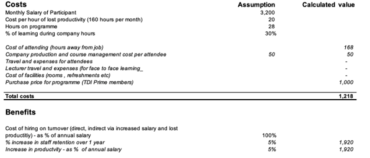Redefining Insurance for the Gig Economy
To Uber is To Disrupt
Uber has achieved that rare and special distinction of becoming a verb. To “Uber” has replaced to “hail” in the same way that Hoover replaced vacuum and Google replaced search. The digital platform that has disrupted taxi cab services in 65 countries around the world is the very definition of the gig economy.
Uber is a two-side market for its drivers and its riders. It’s a digital platform that employs less than 20,000 people to support nearly 4 million driver partners and 91 million riders. At the time of writing this piece, Uber was on the cusp of its IPO valuing the business at around $80bn. But hot off the heels of the disappointing Lyft IPO, Uber look set for a bumpy ride.
Time will tell, but it is worth pointing out that Uber is more than just a new-fangled taxicab business. It’s a digital payment service with no cash exchanging hands in the back of the cab. It’s a diversifying business with new lines such as Uber Eats for restaurant food delivery, JUMP for sharing bikes and scooters, Uber Health for patient and practitioner transportation, Uber Freight for trucking services and Uber Air for aerial ride-sharing.
In an Amazonesque execution of a digital start-up, Uber has battled the regulators and challenged the status quo. It has used its mountain of cheap capital to build global market share and establish Uber as the de facto brand for sharing in the largest economies in the world.
By comparison, their nearest competitor is Lyft, just 3 years younger yet valued at only a quarter of that of Uber at its recent IPO. Lyft only operates in the US and Canada and generates all its revenue from ride-sharing.
The ride-share market in New York
Of the 700 cities that Uber operate in, I’ll use New York to illustrate the impact of Uber and its digital competitors to the market. When one thinks of New York, a picture of the famous yellow cab comes to mind. These yellow taxis are formerly known as medallion cars and they are regulated by the NYC Taxi & Limousine Commission, who regulate all taxis and for-hire vehicles in New York. There are also green or “boro” taxis that were introduced to New York in 2013.
Then there is the category for the ride-sharing platforms known as the for-hire vehicles category, aka FHVs. This is the category for the digital ride-sharing platforms with Uber, Lyft, Juno and Via representing c80% of all FHVs. The main difference with this category is that FHVs cannot accept street hails in New York City, unlike the yellow and green taxicabs. All fares must be given upfront and are binding.
As this chart shows, there are more than 125,000 licensed vehicles in NYC driven by around 185,000 licensed drivers. By far the largest category is the FHV sector, which has more than doubled in numbers over the past 3 years. Over this short period, the average monthly active vehicles have increased from 19,000 to more than 90,000, whilst the number of yellow cabs has remained steady and the numbers of greens have decreased.
The changing driver demographics of the gig economy
Over half of all drivers in New York’s FHV category originate from five countries: Bangladesh, the Dominican Republic, Pakistan, the United States, and India. Since February 2017, more than 90,000 drivers have joined the ranks of the gig economy and taken the driver license exam. This mandatory exam reflects the diversity of the ride-sharing economy in NYC and is administered in 7 languages; English, Spanish, Bengali, Urdu, Russian, Simplified Chinese and Arabic.
And a quarter of those drivers were unemployed before signing up to one of the ride-sharing apps.
This is a rapidly changing marketplace that is polarised between the (analogue) yellow/green taxicab driver and the (digital) ride-share driver. One has an average age in their 50’s, doesn’t mind multiple visits to the brokerage to drink coffee and chat over a doughnut, happily ploughing through lots of paper. They tend to use the internet on their computer at home.
The other is considerably younger, doesn’t have the time to visit anyone’s office, takes coffee and doughnuts in the cab, doesn’t want any paper and does everything online using their phone. Two-thirds of them don’t even have a computer at home! This is the freelance workforce of the gig economy, which accounts for about a third of the working population in the United States.
The Insurtech approach to the gig economy
With this rapidly changing and growing market it is inevitable that there is an impact on how insurance is provided to this new breed of driver. To find out more, I called up David Daiches, the COO and co-founder of specialist InsurTech platform, Inshur.

“Which is when Dan started to look for a technology solution and our paths crossed. I had been working on OpenUnderwriter and developing an open source policy admin solution to allow brokers to trade on the internet. When Dan saw what we had done with OpenUnderwriter, he got in touch straight away. We met in London within days and created Inshur, the rest, as they say, is history.”
It’s a familiar story when I look across the InsurTech landscape; one founder is a technologist, the other understands the market.
Becoming more than just a broker in the gig economy
In the beginning, Inshur operated as an aggregator in New York. They saw the opportunity of getting the driver up and running as fast as possible. In the old world, it could take weeks before a licenced driver was insured and ready to go. In the new world, that wasn’t going to be acceptable.
So they did what InsurTechs do and built a fast and convenient sign-up app using a chatbot called Ami. Providing a totally digital experience on a mobile app, Inshur could get the driver signed up, checked out and quoted in a matter of minutes.
“We asked carriers for more flexibility,
but all they offered us was a dedicated fax machine!“
This gave them a digital face, but behind the scenes, much of what they did looked like a traditional broker operation. They were restricted in their efforts to adapt the insurance experience to meet the digital profile of the ride-share drivers. David explained, “We asked carriers if they would give us some binding facility, but all they offered us was a dedicated fax machine!
“Then we saw what Munich Re was doing with Digital Partners and we reached out to Andy Rear. After an initial meeting with Andy in New York, we signed a partnership agreement with MRDP and launched as an MGA in New York last year. The next logical step for us was to launch in the UK and we strengthened the team by hiring a good taxi underwriter who understood the UK market. We then started working with Uber and collaborating on how we could use their driver data for underwriting purposes.”
Inshur is a service driven, engagement model
It’s clear to me that Inshur wants to be more than just a distributor of insurance products for the gig economy. The service features they are building into the platform offer value over and above a cheap price and an easy to buy an insurance product. It’s what I would call an engagement model.
In New York, Inshur has a partnership with a dash cam provider called Nexar. It’s a self-financing no-brainer for the driver who pays $49 for the camera and in return, they get a 10% discount on their premium, typically worth about $450!
It works for Inshur too, who get access to the footage of any incident/accident. The dash cam also collects telematics data that provides useful corroborating evidence in any claim.
When it comes to claims, the Inshur approach is all about getting the driver back on the road as quick as possible. Although business interruption cover can be challenging when it comes to getting a plated replacement vehicle for the driver, in which case the solution is to pay the driver while they are off the road and get the car fixed as soon as possible
Managing different regulatory environments
Launching in New York and London has created challenges managing very different regulatory environments. David explained it to me; “in the UK it’s much harder to get an FCA licence, but once you have it, you can be very flexible on pricing compared to the US. It’s the other way round In the US. In New York, you can get an insurance licence quite easily by submitting a form, but you don’t have the same freedoms on pricing. In the US, all prices have to be agreed with the regulator and published in advance”
The logic to the US approach is that the regulator is protecting the market against new players undercutting market rates and then failing, leaving an exposure. I know from talking to many founders that it can be difficult to get the regulator to agree with pricing no matter how compelling their proposition for digitally removing cost and inefficiency. The regulators are there to safeguard the customer, not give a free ride to the start-up after all.
Putting the insurance customer first
When it comes to underwriting Uber drivers, INSHUR uses around 50 different rating factors. These are a mix of proprietary data and publicly available data sources from simple processes, such as the scan of a driving license. This data gathering reduces the time on the application process and builds a much richer and more accurate driver risk profile.
One of the significant factors in underwriting used by Inshur is the driver’s Uber rating. Any driver with an Uber rating of 4.99 is going to be rated a much better risk that’s one at, say 4.5. This is much easier to do in the UK than it is in New York, but with their UK experience, Inshur will be able to show the New York regulators that the Uber rating is a reliable factor when pricing premiums.
For the ride-share drivers, insurance is a high fixed cost and Inshur have introduced flexible pricing models to fit the needs of the drivers. Currently, about 90% of their ride-share drivers buy the monthly policy. At each monthly renewal, a simple process involving one click in the app re-rates the driver based on any changes to their Uber rating.
However, Inshur haven’t gone as far as moving to a Pay-As-You-Drive model like the one Metromile have in Los Angeles. I asked David about the need for flexibility and how he saw the market developing for ride-share insurance. “Simpler is better”, he told me.
“We have found that the gig economy drivers want a simple annual/monthly policy that enables them to drive when they want, for whoever they want. We haven’t found much appetite for on-demand. When you think about it, it doesn’t make a lot of sense to keep turning the insurance on and off. It becomes too complicated when most drivers have multiple apps and are signed up to drive for everyone; Uber, Lyft, Juno, etc. They flip between the different platforms to the next ride, they don’t mind where it comes from. Any insurance product that was based on on-demand would need to be smart enough to flip seamlessly between the different ride-share platforms.”
I tend to agree with David, simpler is always better than complicated, unless it can be completely hidden inside a black box, which isn’t practically possible just yet.
I also agree with my friends at Oxbow who have named Inshur in their InsurTech Impact 25 for 2019. And to find out what others think of Inshur and their product for the gig economy, fast forward to about 15 mins into this podcast from the team at 11FS, or listen to this podcast from InsTech London Podcast (1:44).
The author, Rick Huckstep, is an InsurTech thought leader, advisor and speaker. He is the Chairman of The Digital Insurer.




























































